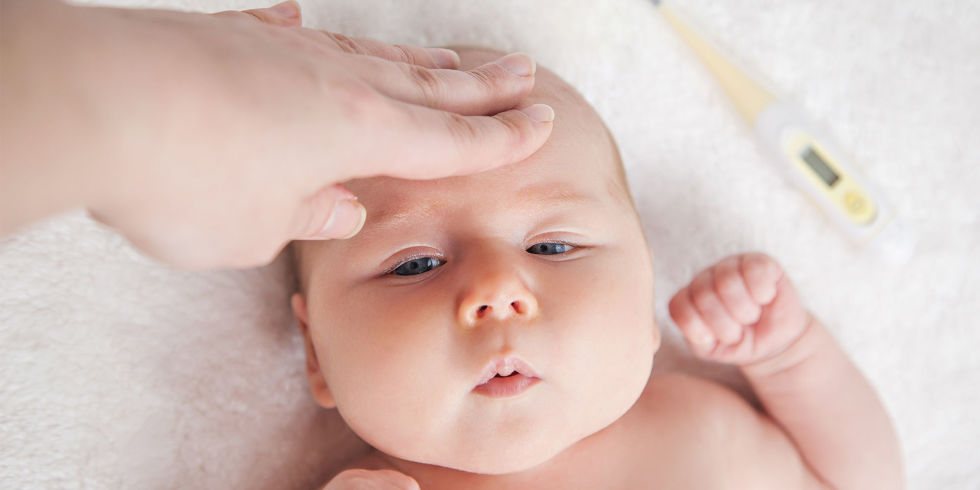Only half of babies with bacterial meningitis display classic warning signs of the potentially deadly disease, new research has shown.
Meningitis is an infection of the protective membranes that surround the brain and spinal cord. It can affect anyone, but is most common in babies, children and young adults. There are two varieties (bacterial and viral) and, while bacterial meningitis is rarer, it is also more serious.
Researchers at St George’s, University of London found that the classic symptoms of the disease, including a fever and neck stiffness, were actually ‘uncommon’ in babies under three months, the group at highest risk of bacterial meningitis.
Only around half of young infants with the disease displayed a fever, which for decades has been considered the key warning sign.
Now, the charity who funded the study, Meningitis Research Foundation, is urging doctors and parents to be more vigilant about less well-known signs of the disease.
These were found to be poor feeding, lethargy and irritability – all of which can be difficult to distinguish from mild illnesses.
Researcher Professor Paul Heath said in a release: ‘The classic features of meningitis were uncommon in many cases.
‘The symptoms displayed by young infants when they are seen by doctors at first in hospital are often non-specific and only half of cases showed signs of a fever.’
Results from the study of 263 British infants – which has been published in the Paediatric Infectious Diseases journal – showed that fever was reported in only 54% of cases, seizures in 28%, bulging fontanelle in 22%, coma in six per cent and neck stiffness in only three per cent.
Vinny Smith, Chief Executive at MRF, said of the findings: ‘Young babies are particularly vulnerable to bacterial meningitis. Meningitis and septicaemia are deadly diseases that strike without warning. Rapid diagnosis and treatment provides the best chance of survival.’
The charity has now created a teaching package aimed at health professionals in order to aid faster diagnosis and treatment, and also wants parents to know ‘not to rely on fever alone as the main symptom to look out for in babies’.












